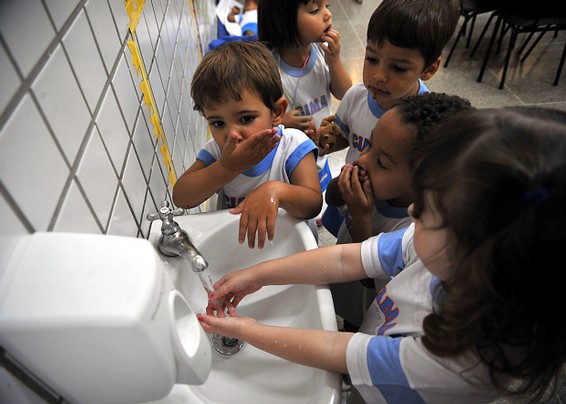
Many practices in school classrooms put students with food allergies at risk. Simple solutions can greatly reduce the risk of allergic reaction. The first step is awareness. It is important to let your child’s teacher know the particular needs of your child. The tips below provide some ideas and suggestions for you to mention in your conversation.
- Request implementation of a “no food sharing” or “no food trading” rule.
- Encourage hand washing after food handling and eating. Liquid soap, bar soap, and sanitizing wipes effectively clean hands of potential allergens, but antibacterial sanitizing gels do not.
- Encourage washing surfaces after food is eaten or used. Commercial wipes and spray cleaners are most effective at removing peanut protein from tables and other surfaces.
- Recommend using nonfood items for classroom projects, academic rewards, and classroom celebrations.
- Encourage packaged food items with ingredient labels, as opposed to home‐baked goods.
- Request avoiding projects that involve modeling clay, paper mâché, crayons, soaps, and other materials that may contain allergens
- Keeping “safe snacks” in the classroom for unplanned events.
- Provide the classroom teacher with safe snacks for the entire class so that your child can eat what everyone else does.
- Ask to become a “classroom parent” so that you can have advance notice of planned activities that might involve food. Some classroom parents are chosen over the summer by the local PTA. If you cannot be a classroom parent, ask to be invited to class events such as field trips so that you can help the teacher monitor your child’s exposure to food allergens.
- Making sure that a copy of your child’s Food Allergy Action Plan is available for substitute teachers. Your child’s school may have its own form, and it may have a slightly different name (i.e., Emergency Care Plan); if not, you can download this Food Allergy Action Plan form from the Food Allergy & Anaphylaxis Network (FAAN) website.
- Help raise awareness of food allergy and help reduce allergens in the classroom; some schools send a letter home to classroom parents, informing them that there is a child in the class with food allergy. Such a letter can help promote parental support of the food allergy management team in its work.
- If appropriate, ask the school administration to designate your child’s classroom as one that is not used for outside activities and events (during non-school hours) that involve food. Taking this precaution will help reduce contamination of desks and other surfaces with food allergens when school is not in session.
There is no cure for food allergies. Strict avoidance of the offending allergen is the only way to prevent a reaction.
For more resources about managing food allergies in schools click here!
Contributor
Sources
The Food Allergy & Anaphylaxis Network (FAAN)
American Academy of Pediatrics
National Association of School Nurses
Center for Disease Control and Prevention
Photo by Agência Brasil / CC BY http://creativecommons.org/licenses/by/3.0/br/deed.pt
